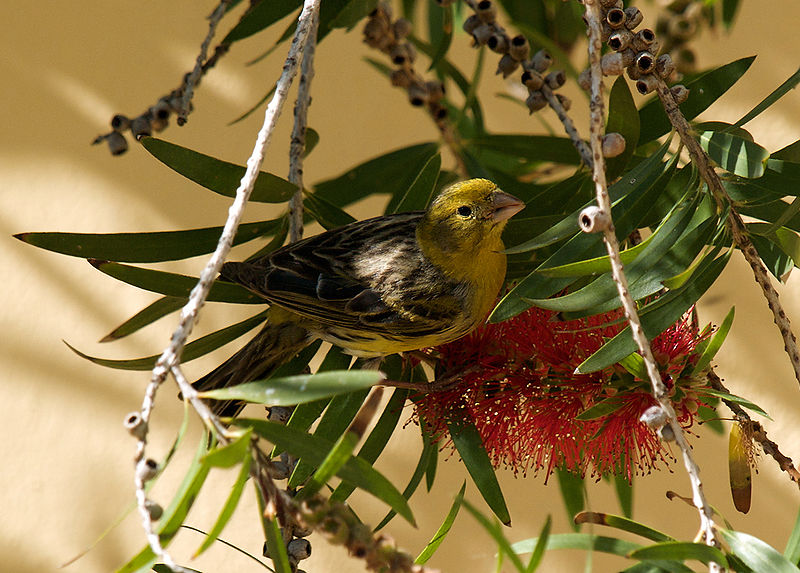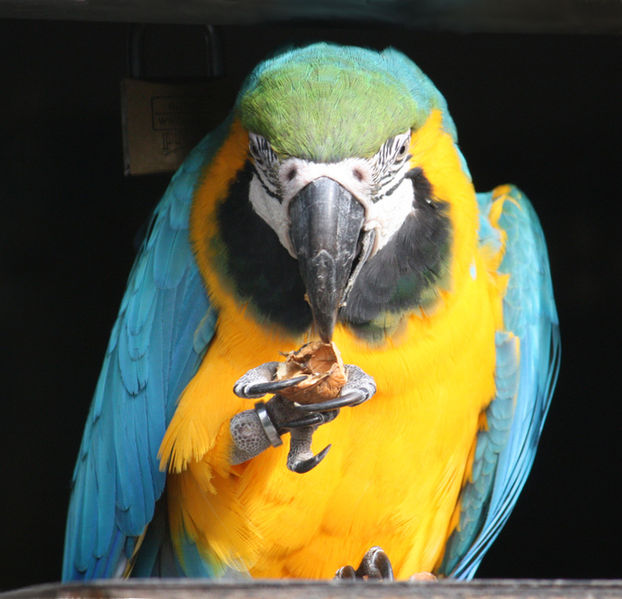Birds of all types are surprisingly skilled at reading human body language, and making the connection between their body parts and ours (i.e., identifying eyes, mouth, etc.). I’ve always been surprised by this, because we are such different beings than birds, and our facial features do not seem to line up well with theirs. Parrots, with their natural sociability and intelligence, are particularly skilled in this regard. Often this assists us in interacting with them, but it can also lead to unintended “misunderstandings”.
Recognizing Our Eyes
My first experience with the abilities of birds to read body language came while learning to hand feed cardinals, chickadees and other visitors to my bird feeder. Looking directly at these birds caused them to take flight immediately, even if I had not moved a muscle (please see my article Hand Feeding Wild Birds for more information on this enjoyable hobby).
Later, while working with birds at the Bronx Zoo, older keepers showed me how to get very close to birds in large exhibits by looking at them with a sideways glance. One could get quite close to many birds, especially while they were feeding, by seeming to “ignore” them…staring head on sent them into a panic.
A People-Feeding Owl
I’ve also found that some birds can recognize mouths as well. An imprinted, hand raised great horned owl under my care courted his favorite keepers by trying to stuff mice into their mouths – he never mistook an ear for a mouth when perched on one’s shoulder (I was apparently not an attractive prospect as a mate, and so was thankfully spared his nuptial gifts!).
Our Body Language
Many people use head and hand gesticulations when speaking, often without realizing just how dramatic those movements can be. My family, whose roots are largely in southern Italy, sometimes joked that my grandmother would be left unable to speak if her hands were tied together!
Parrots are very attuned to even small movements on our part. In some cases, our body language may affect out parrots in ways which we do not intend. Millions of years of evolution have left parrots with finely honed survival abilities. Even long term captives, remain instinctively attuned to signs of predators – wild hand or head movements may, therefore, frighten them. Depending upon the species and individual bird’s personality, a parrot may also react with aggression to movements that it perceives as threatening.
Some birds may react positively to our bobbing heads. There are no hard and fast rules…just bear in mind that your parrot is basing its reaction to you on what you do as well as say.
Mistaken Reinforcement
Reacting with laughter when a parrot does something that is “wrong but cute” will reinforce the bad behavior. Even if you follow up with a correction, the parrot has, in most cases, been given the reward it seeks – namely, being noticed. Even reacting with a sound when bitten can encourage the parrot to bite again.
If at all possible, get the parrot’s attention by making direct eye contact, put the bird down (if on you) or ignore it. Following desirable behavior with notice and praise, especially if such occurs right after bad behavior, will help keep your pet on the right track.
Further Reading
For further discussion of how human-parrot interactions can result in behavioral problems, please see my article Parrot Bonding as a Behavioral Problem.
 That Bird Blog – Bird Care and History for Pet Birds
That Bird Blog – Bird Care and History for Pet Birds

 Researchers at the Max Planck Institute of Ornithology exposed young male canaries to adult males that sang imperfect songs. The young males mimicked these songs to some extent, but by adulthood were singing near-perfect songs. This indicates that canaries likely have an internal “song template” that helps to correct deviations in the songs of their role models. The template seems to be activated when the youngsters hear an adult song, even if that song is imperfect.
Researchers at the Max Planck Institute of Ornithology exposed young male canaries to adult males that sang imperfect songs. The young males mimicked these songs to some extent, but by adulthood were singing near-perfect songs. This indicates that canaries likely have an internal “song template” that helps to correct deviations in the songs of their role models. The template seems to be activated when the youngsters hear an adult song, even if that song is imperfect. Parent-reared birds can bond quite strongly to people and become wonderful companions, especially if taken under one’s care soon after they become independent. In many cases, such birds will be sturdier than hand-reared chicks, and will have been taught important foraging and social skills.
Parent-reared birds can bond quite strongly to people and become wonderful companions, especially if taken under one’s care soon after they become independent. In many cases, such birds will be sturdier than hand-reared chicks, and will have been taught important foraging and social skills. Even the smallest lovebird can deliver a painful bite, and larger parrots are capable of inflicting serious injuries. If a parrot bites and holds on, you must respond appropriately in order to limit the bite’s severity.
Even the smallest lovebird can deliver a painful bite, and larger parrots are capable of inflicting serious injuries. If a parrot bites and holds on, you must respond appropriately in order to limit the bite’s severity.